Ilya Prigogine
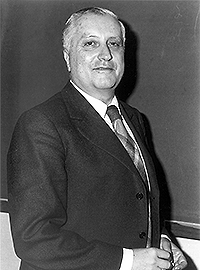
Ilya Prigogine was born in Moscow in 1917, and obtained his undergraduate and graduate education in Chemistry at the Free University in Brussels.
He was awarded the Nobel Prize for his contribution to non-equilibrium thermodynamics, particularly the theory of dissipative structures. The main theme of his scientific work was the role of time in the physical sciences and biology.
He contributed significantly to the understanding of irreversible processes, particularly in systems far from equilibrium. The results of his work have had profound consequences for understanding biological and ecological systems.
Prigogine’s ideas established the basis of ecological systems research. The Prigogine medal to honour his memory is awarded annually to a leading scientist in the field of ecological systems. All recipients have been deeply influenced by Prigogine’s work
Autobiography of Ilya A. Prigogine (1917 - 2003)
Winner of the Nobel Prize in Chemistry 1977
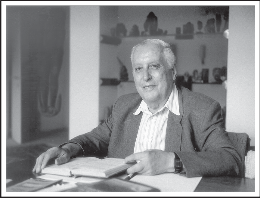
The following is taken from a translation of Prigogine’s French language autobiography
I was born in Moscow, on the 25th of January 1917—a few months before the revolution. My family had a difficult relationship with the new regime, and so we left Russia as early as 1921. For some years (until 1929), we lived as migrants in Germany, before we stayed for good in Belgium. It was at Brussels that I attended secondary school and university. I acquired Belgian nationality in
1949.
My father, Roman Prigogine, who died in 1974, was a chemical engineer from the Moscow Polytechnic. My brother Alexander, who was born four years before me, followed, as I did myself, the curriculum of chemistry at the Université Libre de Bruxelles.
I remember how much I hesitated before choosing this direction; as I left the classical (Greco- Latin) section of Ixelles Athenaeum, my interest was more focused on history and archaeology, not to mention music, especially piano. According to my mother, I was able to read musical scores before I read printed words. And, today, my favourite pastime is still piano playing.
In 1941, I was conferred my first doctoral degree. Very soon, two of my teachers were to exert an enduring influence on the orientation of my future work.
I would first mention Théophile De Donder (1873–1957). After 1918, he was promoted to Professor at the Department of Applied Science and began writing a course on theoretical thermodynamics for engineers. It is with this very circumstance that we have to associate the birth of the Brussels thermodynamics school.
In order to understand fully the originality of De Donder’s approach, I have to recall that since the fundamental work by Clausius, the second principle of thermodynamics has been formulated as an inequality: ‘uncompensated heat’ is positive—or, in more recent terms, entropy production is positive. This inequality refers, of course, to phenomena that are irreversible, as are any natural processes. In those times, these latter were poorly understood. They appeared to engineers and physicochemists as ‘parasitic’ phenomena, which could only hinder something: here the productivity of a process, there the regular growth of a crystal, without presenting any intrinsic interest. So, the usual approach was to limit the study of thermodynamics to the understanding of equilibrium laws, for which entropy production is zero.
This could only make thermodynamics a ‘thermostatics’. In this context, the great merit of De Donder was that he extracted the entropy production out of this ‘sfumato’ when he related it in a precise way to the pace of a chemical reaction, through the use of a new function that he was to call
‘affinity’.
It is difficult today to give an account of the hostility that such an approach was to meet. Fortunately, some eminent scientists derogated this negative attitude. I received much support from people such as Edmond Bauer, the successor to Jean Perrin at Paris, and Hendrik Kramers in Leyden.
De Donder, of course, had precursors, especially in the French thermodynamics school of Pierre Duhem. But in the study of chemical thermodynamics, De Donder went further, and he gave a new formulation of the second principle, based on such concepts as affinity and degree of evolution of a reaction, considered as a chemical variable.
Given my interest in the concept of time, it was only natural that my attention was focused on the second principle, as I felt from the start that it would introduce a new, unexpected element into the description of physical world evolution. A huge part of my scientific career would then be devoted to the elucidation of macroscopic as well as microscopic aspects of the second principle, in order to extend its validity to new situations, and to the other fundamental approaches of theoretical physics, such as classical and quantum dynamics.
I would also like to stress the influence on my scientific development that was exerted by the second of my teachers, Jean Timmermans (1882–1971). He was more an experimentalist, specially interested in the applications of classical thermodynamics to liquid solutions, and in general to complex systems, in accordance with the approach of the great Dutch thermodynamics school of van der Waals and Roozeboom.
In this way, I was confronted with the precise application of thermodynamical methods, and I could understand their usefulness. In the following years, I devoted much time to the theoretical approach of such problems, which called for the use of thermodynamical methods; I mean the solutions theory, the theory of corresponding states and of isotopic effects in the condensed phase. A collective research with V. Mathot, A. Bellemans and N. Trappeniers has led to the prediction of new effects such as the isotopic demixtion of helium He3 + He4, which matched in a perfect way the results of later research.
Among all those perspectives opened by thermodynamcis, the one which was to keep my interest was the study of irreversible phenomena, which made so manifest the ‘arrow of time’. From the very start, I always attributed to these processes a constructive role, in opposition to the standard approach, which only saw in these phenomena degradation and loss of useful work. The fact is that it appeared to me that living things provided us with striking examples of systems which were highly organized and where irreversible phenomena played an essential role.
Such intellectual connections, although rather vague at the beginning, contributed to the elaboration, in 1945, of the theorem of minimum entropy production, applicable to non-equilibrium stationary states. This theorem gives a clear explanation of the analogy which related the stability of equilibrium thermodynamical states and the stability of biological systems, such as that expressed in the concept of ‘homeostasy’ proposed by Claude Bernard. This is why, in collaboration with J.M. Wiame, I applied this theorem to the discussion of some important problems in theoretical biology, namely to the energetics of embryological evolution. As we better know today, in this domain the theorem can at best give an explanation of some ‘late’ phenomena, but it is remarkable that it continues to interest numerous experimentalists.
From the very beginning, I knew that the minimum entropy production was valid only for the linear branch of irreversible phenomena, the one to which the famous reciprocity relations of Onsager are applicable. And, thus, the question was: What about the stationary states far from equilibrium, for which Onsager relations are not valid, but which are still in the scope of macroscopic description? Linear relations are very good approximations for the study of transport phenomena (thermical conductivity, thermodiffusion, etc.), but are generally not valid for the conditions of chemical kinetics. Indeed, chemical equilibrium is ensured through the compensation of two antagonistic processes, while in chemical kinetics—far from equilibrium, out of the linear branch—one is usually confronted with the opposite situation, where one of the processes is negligible.
Notwithstanding this local character, the linear thermodynamics of irreversible processes had already led to numerous applications, as shown by people such as J. Meixner, S.R. de Groot and P. Mazur, and, in the area of biology, A. Katchalsky. It was for me a supplementary incentive when I had to meet more general situations. Those problems had confronted us for more than twenty years, between 1947 and 1967, until we finally reached the notion of ‘dissipative structure’. During this phase of my work, the original and enthusiastic mind of my colleague Paul Glansdorff played a major role.
Our collaboration was to give birth to a general evolution criterion which is of use far from equilibrium in the non-linear branch, out of the validity domain of the minimum entropy production theorem. Stability criteria that resulted were to lead to the discovery of critical states, with branch shifting and possible appearance of new structures. This quite unexpected manifestation of ‘disorder– order’ processes, far from equilibrium, but conforming to the second law of thermodynamics, was to change in depth its traditional interpretation. In addition to classical equilibrium structures, we now face dissipative coherent structures, for sufficient far-from-equilibrium conditions.
In a first, tentative step, we thought mostly of hydrodynamical applications, using our results as tools for numerical computation. Here the help of R. Schechter from the University of Texas at Austin was highly valuable. Those questions remain wide open, but our centre of interest has shifted towards chemical dissipative systems, which are more easy to study than convective processes.
All the same, once we formulated the concept of dissipative structure, a new path was open to research and, from this time, our work showed striking acceleration. This was due to the presence of a happy meeting of circumstances, mostly due to the presence in our team of a new generation of clever young scientists. I cannot mention here all those people, but I wish to stress the important role played by two of them, R. Lefever and G. Nicolis. It was with them that we were in a position to build up a new kinetical model, which would prove at the same time to be quite simple and very instructive—the ‘Brusselator’, as J. Tyson would call it later—and which would manifest the amazing variety of structures generated through diffusion–reaction processes.
It was only quite a while later that I recalled the comments by A. Turing on those questions of stability, as, perhaps too concerned about linear thermodynamics, I was then not receptive enough.
Let us go back to the circumstances that favoured the rapid development of the study of dissipative structures. The attention of scientists was attracted to coherent non-equilibrium structures after the discovery of experimental oscillating chemical reactions such as the Belusov–Zhabotinsky reaction; the explanation of its mechanism by Noyes and his co-workers; the study of oscillating reactions in biochemistry (for example, the glycolytic cycle, studied by B. Chance and B. Hess) and eventually the important research led by M. Eigen. Therefore, since 1967, we have been confronted with a huge number of papers on this topic, in sharp contrast with the total absence of interest which prevailed during previous times.
But the introduction of the concept of dissipative structure was also to have other unexpected consequences. It was evident from start that the structures were evolving out of fluctuations. They appeared in fact as giant fluctuations, stabilized through matter and energy exchanges with the outer world. Since the formulation of the minimum entropy production theorem, the study of non-equilibrium fluctuation had attracted all my attention. It was thus only natural that I resumed this work in order to propose an extension of the case of far-from-equilibrium chemical reactions.
This subject I proposed to G. Nicolis and A. Babloyantz. We expected to find for stationary states a Poisson distribution similar to the one predicted for equilibrium fluctuations by the celebrated Einstein relations. Nicolis and Babloyantz developed a detailed analysis of linear chemical reactions and were able to confirm this prediction. They added some qualitative remarks which suggested the validity of such results for any chemical reaction.
Considering again the computations for the example of a non-linear biomolecular reaction, I noticed that this extension was not valid. A further analysis, where G. Nicolis played a key role, showed that an unexpected phenomenon appeared while one considered the fluctuation problem in non-linear systems far from equilibrium: the distribution law of fluctuations depends on their scale, and only
‘small fluctuations’ follow the law proposed by Einstein. After a prudent reception, this result is now widely accepted, and the theory of non-equilibrium fluctuations is fully developing now, so as to allow us to expect important results in the following years. What is already clear today is that a domain such as chemical kinetics, which was considered conceptually closed, must be thoroughly rethought, and that a brand new discipline, dealing with non-equilibrium phase transitions, is now appearing.
Progress in irreversible phenomena theory leads us also to reconsideration of their insertion into classical and quantum dynamics. Let us take a new look at the statistical mechanics of some years ago. From the very beginning of my research, I had had occasion to use conventional methods of statistical mechanics for equilibrium situations. Such methods are very useful for the study of thermodynamical properties of polymer solutions or isotopes. Here we deal mostly with simple computational problems, as the conceptual tools of equilibrium statistical mechanics have been well established since the work of Gibbs and Einstein. My interest in non-equilibrium would by necessity lead me to the problem of the foundations of statistical mechanics, and especially to the microscopic interpretation of irreversibility.
Since the time of my first graduation in science, I was an enthusiastic reader of Boltzmann, whose dynamical vision of physical becoming was for me a model of intuition and penetration. Nonetheless, I could not but notice some unsatisfying aspects. It was clear that Boltzmann introduced hypotheses foreign to dynamics; under such assumptions, to talk about a dynamical justification of thermodynamics seemed to me an excessive conclusion, to say the least. In my opinion, the identification of entropy with molecular disorder could contain only one part of the truth if, as I persisted in thinking, irreversible processes were endowed with this constructive role I never cease to attribute to them. For another part, the applications of Boltzmann’s methods were restricted to diluted gases, while I was most interested in condensed systems.
At the end of the forties, great interest was aroused in the generalization of kinetic theory to dense media. After the pioneering work by Yvon, publications of Kirkwodd, Born and Green, and of Bogoliubov attracted a lot of attention to this problem, which was to lead to the birth of non- equilibrium statistical mechanics. As I could not remain alien to this movement, I proposed to G. Klein, a disciple of Fürth who came to work with me, to try the application of Born and Green’s method to a concrete, simple example, in which the equilibrium approach did not lead to an exact solution. This was our first tentative step in non-equilibrium statistical mechanics. It was eventually a failure, with the conclusion that Born and Green’s formalism did not lead to a satisfying extension of Boltzmann’s method to dense systems.
But this failure was not a total one, as it led me, during a later work, to a first question: Was it possible to develop an ‘exact’ dynamical theory of irreversible phenomena? Everybody knows that according to the classical point of view, irreversibility results from supplementary approximations
to fundamental laws of elementary phenomena, which are strictly reversible. These supplementary approximations allowed Boltzmann to shift from a dynamical, reversible description to a probabilistic one, in order to establish his celebrated H theorem.
We still encountered this negative attitude of ‘passivity’ imputed to irreversible phenomena, an attitude that I could not share. If—as I was prepared to think—irreversible phenomena actually play an active, constructive role, their study could not be reduced to a description in terms of supplementary approximations. Moreover, my opinion was that in a good theory a viscosity coefficient would present as much physical meaning as a specific heat, and the mean life duration of a particle as much as its mass.
I felt confirmed in this attitude by the remarkable publications of Chandrasekhar and von Neumann, which were also issued during the forties. That was why, still with the help of G. Klein, I decided to take a fresh look at an example already studied by Schrödinger, related to the description of a system of harmonic oscillators. We were surprised to see that, for all such a simple model allowed us to conclude, this class of systems tend to equilibrium. But how to generalize this result to non-linear dynamical systems?
Here the truly historic performance of Léon van Hove opened for us the way (1955). Some of his works had a lasting effect on the whole development of statistical physics; I mean not only his study of the deduction of a ‘master equation’ for anharmonic systems, but also his fundamental contribution on phase transitions, which was to lead to the branch of statistical mechanics that deals with so- called ‘exact’ results.
This first study by van Hove was restricted to weakly coupled anharmonic systems. But, anyway, the path was open, and with some of my colleagues and collaborators, mainly R. Balescu, R. Brout, F. Hénin and P. Résibois, we achieved a formulation of non-equilibrium statistical mechanics from a purely dynamical point of view, without any probabilistic assumption. The method we used is summed up in my 1962 book. It leads to a ‘dynamics of correlations’, as the relation between interaction and correlation constitutes the essential component of the description. Since then, these methods have led to numerous applications.
This concluded the first step of my research in non-equilibrium statistical mechanics. The second is characterized by a very strong analogy with the approach of irreversible phenomena which led us from linear thermodynamics to non-linear thermodynamics. In this tentative step also, I was prompted by a feeling of dissatisfaction, as the relation with thermodynamics was not established by our work in statistical mechanics, nor by any other method. The theorem of Boltzmann was still as isolated as ever, and the question of the nature of dynamic systems to which thermodynamics applies was still without answer.
The problem was by far more wide and more complex than the rather technical considerations that we had reached. It touched the very nature of dynamical systems, and the limits of Hamiltonian description. I would never have dared approach such a subject if I had not been stimulated by discussions with some highly competent friends such as the late Léon Rosenfeld from Copenhagen, or G. Wentzel from Chicago. Rosenfeld did more than give me advice; he was directly involved in the progressive elaboration of the concepts we had to explore if we were to build a new interpretation of irreversibility. More than any other stage of my scientific career, this one was the result of a collective effort. I could not possibly have succeeded had it not been for the help of my colleagues M. de Haan, Cl. George, A. Grecos, F. Henin, F. Mayné, W. Schieve and M. Theodosopulu. If irreversibility does not result from supplementary approximations, it can only be formulated in a theory of transformations which expresses in ‘explicit’ terms what the usual formulation of dynamics does ‘hide’. In this perspective, the kinetic equation of Boltzmann corresponds to a formulation of dynamics in a new representation.
In conclusion, dynamics and thermodynamics become two complementary descriptions of nature, bound by a new theory of non-unitary transformation. I came so to my present concerns; and, thus, it is time to end this intellectual autobiography. As we started from specific problems, such as the thermodynamic signification of non-equilibrium stationary states, or of transport phenomena in dense systems, we have been faced, almost against our will, with problems of great generality and complexity, which call for reconsideration of the relation of physicochemical structures to biological ones, while they express the limits of Hamiltonian description in physics. Indeed, all these problems have a common element: time.
The research conducted with my friend R. Herman on the theory of car traffic gave me confirmation of the supposition that even human behaviour, with all its complexity, would eventually be susceptible of a mathematical formulation. In this way the dichotomy of the ‘two cultures’ could and should be removed. There would correspond to the breakthrough of biologists and anthropologists towards the molecular description or the ‘elementary structures’, if we are to use the formulation by Lévi- Strauss, a complementary move by the physicochemist towards complexity. Time and complexity are concepts that present intrinsic mutual relations.
During his inaugural lecture, De Donder spoke in these terms: ‘Mathematical physics represents the purest image that the view of nature may generate in the human mind; this image presents all the character of the product of art; it begets some unity, it is true and has the quality of sublimity; this image is to physical nature what music is to the thousand noises of which the air is full … .’
Filtrate music out of noise; the unity of the spiritual history of humanity, as was stressed by M. Eliade, is a recent discovery that has still to be assimilated. The search for what is meaningful and true by opposition to noise is a tentative step that appears to be intrinsically related to the coming into consciousness of man facing a nature of which he is a part and which it leaves.
The work of a theoretician is related in a direct way to his whole life. It takes, I believe, some amount of internal peace to find a path among all successive bifurcations. This peace I owe to my wife, Marina. I know the frailty of the present, but today, considering the future, I feel myself to be a happy man.
Obituary of Professor Ilya A. Prigogine
By Prof Tiezzi, University of Siena, Italy
Last Christmas I received greetings for the new year from Bruxelles. I was surprised to see the name: Ilya Prigogine. It is usually the scholar who writes to the Magister and non vice versa.
A few years earlier, Ilya invited me and Nadia to his home in Bruxelles. I remember the marvellous collection of “time machines”: the ancient Maya, the Chinese masterpieces, Inca pieces. Ilya’s wife Marina and his son Pascal are people of rare kindness. After dinner we talked about cosmology, irreversibility and the arrow of time with a French scientist.
Nobel prize winner Ilya Prigogine, Viscount, professor of Physical Chemistry, came to Siena several times. We awarded him a Laurea Honoris Causa in Biological Sciences in the Aula Magna of Siena University. He noticed at the time that the University is one of the oldest in the world, founded in 1240.
For many years we exchanged Ph.D. students (or rather, students from Siena went to Bruxelles for a year). Now that he is no longer with us, I feel that we have lost not only a Magister but a brilliant young mind and a human being always friendly and kind. A friend, a very good friend.
I personally consider Ilya Prigogine the greatest scientist of the 20th century. He was awarded the Nobel Prize in chemistry in 1977 for his contributions to nonequilibrium thermodynamics, particularly the theory of dissipative structures. He was born in Moscow, Russia on January 25, 1917. He obtained both his undergraduate and graduate education in chemistry at the Université Libre de Bruxelles.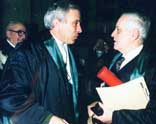
The main theme of his scientific work was the role of time in the physical sciences and biology. He has contributed significantly to the understanding of irreversible processes, particularly in systems far from equilibrium. The results of his work on dissipative structures have stimulated many scientists throughout the world and may have profound consequences for our understanding of biological and ecological systems.
In the Nobel Lecture (8 December, 1977) Prigogine wrote: “the development of the theory permits us to distinguish various levels of time: time as associated with classical or quantum dynamics, time associated with irreversibility through a Lyapounow function and time associated with ‘history’ through bifurcations. I believe that this diversification of the concept of time enables a better integration of theoretical physics and chemistry with disciplines dealing with other aspects of nature.”
As only a very intelligent person can do, he wrote an autobiography, which like his scientific career, was distinguished by a total absence of hypocritical respect. Here are some passages I found particularly significant:
“… Since my adolescence, I have read many philosophical texts, and I still remember the spell "L'évolution créatrice" cast on me. More specifically, I felt that some essential message was embedded, still to be made explicit, in Bergson's remark:
‘ The more deeply we study the nature of time, the better we understand that duration means invention, creation of forms, continuous elaboration of the absolutely new.’
Fortunate coincidences made the choice for my studies at the university. Indeed, they led me to an almost opposite direction, towards chemistry and physics. And so, in 1941, I was conferred my first doctoral degree. Very soon, two of my teachers were to exert an enduring influence on the orientation of my future work.
… It is difficult today to give an account of the hostility that such an approach was to meet. For example, I remember that towards the end of 1946, at the Brussels IUPAP meeting, after a presentation of the thermodynamics of irreversible processes, a specialist of great repute said to me, in substance: ‘I am surprised that you give more attention to irreversible phenomena, which are essentially transitory, than to the final result of their evolution, equilibrium.’
… The work of a theoretician is related in a direct way to his whole life. It takes, I believe, some amount of internal peace to find a path among all successive bifurcations. This peace I owe to my wife, Marina. I know the frailty of the present, but today, considering the future, I feel myself to be a happy man.”
Enzo Tiezzi, University of Siena, Italy
NOTE: Prof Ilya Prigogine, Honorary President of the ECOSUD Conference Series and Honorary Editor of the Book Series “The Sustainable World”.
Dialectic by M. Prigogine and T. Patterson
Introduction
Upon the near collapse of the post-Kyoto meeting in Buenos Aires in December 2004, EU head delegate, Dutch environment secretary Pieter van Geel summarised, stating: 'A lot of people are afraid of discussing the future.' His words referred to the failure of the meeting’s intentions to determine worldwide cooperation to reduce global warming following the first 15 Kyoto years to 2012. These objectives failed in no small part due to policy’s demands on science with respect to certainty and measures of determinism. Social expectations such as these persist despite scientific advances, most notably made by Nobel Prize winner Ilya Prigogine and his numerous collaborators, which show that rigid dependence on these conditions does more to paralyse collective action than enable it. As a result, policy has yet to effectively harness the most powerful aspect of science with respect to resolving the major challenges of the global future-its creativity.
Ilya Prigogine laid scientific and philosophical foundations in the time-reversible, symmetric world of theoretical physics for rigorous study of irreversible, far-from-equilibrium phenomena, such as that of living systems and therefore the frontiers of theoretical ecology. As such, his work ethic, creative drive and ethos provide a beacon for those who would combine ecological theory with evolutionary physics. Here, his wife, Maryna Prigogine discusses with Trista Patterson, a post-doctoral researcher in Ecodynamics at the Italian University of Siena, issues of ecological theory and Prigogine’s future creative.
This article takes an atypical scientific form. 'Dialectic' usually refers to either the Socratic method of cross-examination, Hegel’s model of history. 'Dialectics' can also refer to an understanding of how we can or should perceive the world (epistemology), an assertion of the interconnected, contradictory and dynamic nature of the world outside our perception of it (ontology), or a method of presentation of ideas or conclusions. The back-and-forth (dialectic) of causation implies a dynamic process and reflects the spirit of ecodynamics research.
Interview
T. Patterson: Thank you for your time, Madame Prigogine.
M. Prigogine: You’re welcome. I enjoyed my trip to Siena, Italy, to award the first Prigogine Medal in Ecodynamics.
T. Patterson: The Journal of Ecodynamics was initiated by a group of scientists who felt that advances in evolutionary physics were being complimented by recent advances in theoretical ecology, and that these synergies were among the most exciting advances in resolving major issues of global concern.
The time was right; they felt, to provide a venue for exchange of information which could support rigorous study of ecodynamics. Ecodynamics is the study of ecological complexity based in rigorous foundations such as the laws of thermodynamics. Your husband’s evolutionary approach, of course, is noted for being the origin of this line of research.
Your contribution continues to be valuable as you have been central to the organization and dissemination of your husband’s work throughout his life. More than a calculating look at the proofs he devised, I believe the editors asked me to consult you because a more intuitive approach to his work was desired. That kind of perspective, as you’re aware, is very difficult to bring out of a scientific document. Your contribution is seen as valuable to inspiring other contributions to the journal which emphasize creative and intuitive approaches—not just limited to pure science, but also to provide a venue which could be combined with art, philosophy, etc.
M. Prigogine: Yes, well, that ‘intuition’ was something incredible about my husband. Already in 1937 at the age of 20 in ‘Les Cahiers du Libre Examen’ (Cercle d’Etude de L’Université Libre de Bruxelles) he wrote:
Contemporary experiments in physics, biology and psychology show us the whole universe obeying deterministic law. But it is with some reluctance that our mind accepts this conclusion, one in such contradiction with our life experience that permits us to believe in the possibility of unarbitrary choice between different conduct. [1]
We see then that from the beginning he could not accept that the whole human experience would be in contradiction with the fundamental laws of nature which were deterministic and reversible in time. And the quest for an answer to this problem became the centre of his search during all his life.
T. Patterson: (laughs) Well, I suppose there’s a lesson there, but of course, it takes courage to discuss ideas at the age of 20 when you are not sure how to go about the proof of what you intuitively know to be true. There’s a courage in that, and personal conviction, he wrote frequently of passion in science stating:
People tend to think of science as something very dry and dispassionate, but there is a great deal of passion involved … I have always thought that science has two aspects: to understand the world around us but also to understand our own position in the world. The latter problem in particular can never be a neutral one.We are involved in scientific research like we are involved in a political movement. Passion is as much a part of science as it is of politics.—I. Prigogine [2]
M. Prigogine: Oh good, so you’ve read that article. Yes, he believed in the role of passion in processing knowledge. This seems to be a paradox as science by definition is beyond passion. He wrote ‘… how can we accept as Einstein did, the idea that determinism reigns absolute and at the same time the idea that the creation of theory is due to the free play of the human mind? I think this is an example of an emotional attitude that clearly marks the limits of reason.’ [3]
T. Patterson: Do you suspect that this kind of courage, passion, etc., is what is needed for science to contribute to overcoming the major social roadblocks of our time? What comes to mind is your husband’s courage to speak about the future. I sent you that quote, I believe, from the close of the Kyoto meetings. I was discouraged that nothing happened there, and the contrast struck me that they said it was because people were afraid to speak of the future. Your husband didn’t seem to have that fear.
M. Prigogine: Well, no. But you know, nobody wants to accept the responsibility for forcing us to act in the way we should. It’s not popular! They are thinking about the very near future.
T. Patterson: Your husband had some interesting things to say about the distant future, surprising, I found especially with respect to utopias. Scientists don’t speak of utopias so frequently, but in his work they seemed to have a very definite role:
The future of mankind is most often seen in one of two ways. One view is that mankind is making progress with respect to self-determination and human dignity, etc. The other view is that mankind is running straight toward catastrophe. I believe that both attitudes are too extreme and have to be corrected. We do not live in a deterministic system. We cannot extrapolate from our present state what the future will bring …
I prefer to look at this question a different way. I believe that what we do today depends on our image of the future, rather than the future depending on what we do today. We build our equations by our actions. These equations, and the future they represent, are not written in nature. In other words, time becomes construction. Of course, we have some conditions that determine limits of the future but within these limits are many, many possibilities …Therefore, since no deterministic prediction is likely to be valid, visions of the future—utopian visions—play a very important role in present conduct …
I like very much the fact that instability opens up a horizon of possibilities, since our actions at a given time depend on the way in which we view the future. If we looked on the horizon and saw only death, pollution and decay, I think it would erase any argument for reasoned, ethical action today.
I am more afraid of the lack of utopias. —I. Prigogine [4]
M. Prigogine: Yes that’s exactly it. Furthermore, he really believed in the role of the individual, the role of everybody to imagine and take part in acting which creates the future. This conviction came from his study of the behaviour of systems far from equilibrium. He showed that far from equilibrium complex systems are capable of creation of the new structures. There are many possibilities, but only one is realized. And the kind of bifurcation realized depends strongly on the fluctuation realized. And here we come to the role of individuals in creating the conditions which would permit the bifurcation that will bring us to the future which we would like to have.
T. Patterson: Some have cited as your husband’s work as evidence of freedom and ethical responsibility in an asymmetric universe. I remember in another of his articles, he seemed to speak directly to young researchers, emphasizing the difference between being and becoming. I wonder if this isn’t at the core of how uncertainty paralyzes society in working for future collective good. Do you think it’s that the idea of being is something definite, tangible and becoming—the mechanisms and one’s role in how the future comes about is so much less clear? He wrote ‘I try to work out the transition between being Being and Becoming—Being is always a stage of Becoming’ [5]. He thus referenced the role of bifurcations throughout history, and the importance of individual action in instability. At that time he was referring to social fluctuations and microscopic structures which precipitated major world events—but it seems this idea could be applied to so many contemporary realities.
The world is based on probability and the history of society is most definitely based on probability.
The hope I would like to give young people is that probability lends importance to these fluctuations. History is not made, it is being made. …history is still in its early stages—we only have 10,000 years of history. Man will change; man is only at his early stage. There are still so many people who have no involvement in their culture, who are still hungry. Is this necessary, is it inevitable? I don’t believe it is. … it is important that young people play a greater role. They must fight against resignation and the sense of powerlessness.
M. Prigogine: Well, being and becoming, that is a difficult, difficult issue. He was very certain in his ideas of utopias. It’s not a linear development, you know. When you say you want to go somewhere, it’s never direct … He insisted that the young would have the conviction … ‘you must believe’. He was speaking and believing that each one person must take their own responsibility. You see, he pursued his ideas because he believed that the reality in which he lived (following the Russian revolution, the son of a family who had to emigrate from Russia) was not the only possible reality, that it could be influenced in a different way and give a different bifurcation. I think Einstein and my husband lived at roughly the same time, and was exposed to many of the same conditions. It is amazing that they turned out so differently. Einstein was a pessimist, he used science as a way to escape the world; he used it as a way to escape realities. My husband was totally opposite. He wanted to change the world as it was.
T. Patterson: I’ve heard people say that your husband had Einstein rolling in his grave! Their views were so different; where did he get that courage? Did your husband have to think Einstein was out of his mind with his ideas?
M. Prigogine: No, no! On the contrary! He had a great admiration for Einstein, you know. And he also had a great regret. One of his friends at University asked him once if he wanted to meet Einstein, and he said ‘Oh, yes!’…they went to the University, but when they got to the door he thought, and changed his mind. He went home instead, thinking ‘I’m not prepared to discuss with him’, and turned away, thinking ‘I will do it next time’… But then you know ‘the next time’ never came, because Einstein died. Yes, I suppose there’s a lesson there.
T. Patterson: For procrastinators like myself, I suppose (laughs). Let’s go back a bit. I want to clarify something…you’d said your husband cited Aristotle, Newton, Laplace, Einstein, Kant,1 especially when it seemed he felt that social policy was demanding and/or relying too much on science for determined, certain, objective answers. When, in fact, his work proved that the laws of nature were, in effect, creative, and irreversible processes that played an active rather than parasitic role. In the lectures you sent me he would state:
Laws of nature are no more leading to certitudes, the only express ‘possibilities’. In the early stage of the world the world was like a small child which could become a musician, lawyer or whatsoever, but not all at the same time. Similarly, the laws of nature whether they are 1 See also Tiezzi [7] p. 10 for a more complete discussion of epistemology, science and technoscience, and Tiezzi [8]for a discussion of the deterministic and mechanistic theories in driving ecological deterioration in the 20th century. classical, quantum or relativistic are no longer expressing deterministic situations, they express possibilities … there are not only laws, but also events. and
The world is a historical world, that there are instabilities, fluctuations, going on at all levels…
Nature is not only a geometry, it contains a narrative element, more like a novel … Time is a ‘construction’, and being a construction, creativity becomes part of the laws of nature, something in which we participate. [6]
If the role of the scientist is traditionally thought to be one of cold, calculating, dispassionate objectivity, this couldn’t have been an easy position for him to take….
M. Prigogine: Yes, of course not! The idea that laws of nature are no more leading to certitude but that they only expresses possibilities is still not easy to accept for some scientists. As far as we go to the past, as soon as the conscience appeared in the human mind, humans became anxious about the future. The deterministic laws gave us a sense that it was possible to foresee the future. This is certainly one of the reasons why Newton’s law was so well accepted.
T. Patterson: Do you think that this natural difficulty in taking personal responsibility is why scientists are often reluctant to adopt the creative role necessary to resolve the theoretical problems posed to the future by environmental crisis? I mean, doesn’t it seem there are two extremes between which one is trapped? Either one is believing that they are insignificant and therefore can’t do anything, or one is fearful of the power and responsibility one would have if they could bring about the deepest change?
You’d mentioned a few moments ago that social action was blocked because of fear of unpopular decisions….Madame Prigogine, on the occasion of the first Prigogine Awards, presenting the Medal to Professor Jørgenson.
M. Prigogine: Yes, well, fear of that and fear of the future. It’s a cultural attribute, one which can only be described by comparing different cultures. My husband was always very interested in other civilizations, particularly pre-Columbian.
Pre-Colombian peoples believed that the world was created by self-sacrifice of the gods. This sacrifice created the world, it’s sustained it and as it sustained it, it transformed it. But their gods were not strong, they had to be helped by peoples. The Mesoamericans were obsessed by the responsibility for keeping the cosmos in movement. They believed that the universe was in eternal danger of stopping, and thus perishing. To avoid this catastrophe man must’ve nourished the sun with his blood. The gods needed the human beings as the human beings needed the gods. Anxiety and fear are principle images in their art, so you can see many many examples of it. They believed, in the constructive role of time and in their role to influence the world. The Chinese vision of the world was completely different. The very existence of deterministic laws had no place in Chinese thought. To think of nature as submissive to universal, deterministic laws seemed to many ancient Chinese scholars as a contradiction in terms. They shared the common Chinese view of natural processes as something spontaneous, submissive only to internal regulation. In this context, Chinese scholars thought of the man–nature relationship in terms of resonance or coexistence more than in terms of control or domination. The very confirmation of this relation you can find in Chinese art—in the place which is given to the human being in the painted landscape for example. The association of nature with the idea of complexity was very strong in Chinese tradition and was very near to the vision of my husband. This is probably the reason why when he was invited in 1980 to give the series of lectures, after the first lecture, they told him that he was not to explain from the beginning because they already knew it. They asked him to speak about more recent work.They were more attuned to his work than we had imagined. Now, speaking about European culture, traditionally in European culture we have developed the idea of a strong god. Humans were considered somewhere between nature and god, a sort of place of privilege. There was this belief that god was protecting us. This is why it was so well accepted—the deterministic vision of the world, Newton’s laws, etc. It was very comfortable and gave a great impression of security. However, today the modern science suggests a different conception of the world which is curiously much nearer to the beliefs of pre-Columbian peoples, the conception in which a human being is no more considered an automaton with no responsibility but rather a part of nature with the capacity to influence nature and to create a new future. Also, more recently we are seeing an emergence of interest in the study of complexity of nature in European science, in part bringing it nearer to the perspective the Chinese have long held. My husband identified very much with the harmony of their approach.
T. Patterson: I’ve heard that when written in Chinese, the word ‘crisis’ is composed of two characters— the first one represents danger and the second one represents opportunity.
M. Prigogine: Why yes, I think my husband would have agreed very much in this description, that any given event is capable of becoming a catastrophe or something wonderful. I think he would’ve liked this description very much indeed.
Anyway, there are influences and applications of the work of my husband in many fields. Recently we had a wonderful meeting organized by the Solvay Institute (Bruxelles) to commemorate him. All of his colleagues from throughout his lifetime came—people that I hadn’t seen in 20 years! And the applications and connections are being made in all different fields, philosophy, art, social sciences…it’s amazing. I think the connections will go on for a long time, there are many questions.
You know, my husband said to me five days before he died ‘You know, I wasn’t so gifted. I took
50 years to prove the ideas I had when I was 20.’…
T. Patterson: Well that certainly puts the tasks at hand in perspective, doesn’t it?
M. Prigogine: (laughs) Yes, well, there is a lot to do.
Conclusion
Bertrand Russell, in his ‘History of Western Philosophy ‘wrote ‘To teach how to live without certainty, and yet without being paralyzed by hesitation, is perhaps the chief thing that philosophy in our age can still do for those who study it.’ In this light, probably one of the greatest ecological philosophers was one who was not known to be an ecologist at all. Ilya Prigogine bridged the gap between the old determinacy of physical science (laws extending from non-living, reversible, closed systems) and the new indeterminacy of complex, living, irreversible, systems. In doing so, he offered an alternative way to reconcile the findings of prior notable physicists with the living, dynamical, far from equilibrium realities of our world.
The work Ilya Prigogine left behind is fundamental to the greatest ecological challenges yet to be advanced. We began this interview speaking about the intuitive approaches which might break the paralysis that uncertainty places on collective social action, and have discussed some of the ways Ilya Prigogine appreciated the different facets of these questions. He saw the world as somewhere between a deterministic world (completely governed by laws) and a completely arbitrary world (completely governed by events), the events being a combination of probability and irreversibility. Irreversibility, Prigogine explained, is the origin of free will, creativity and novelty, and thus, life. Despite the findings of Prigogine and those after him, emphasis is still placed in perfect certainty.
Science has a continuing battle to do with the mistaken assertion that all partial truths are in the end compatible, that they are part of a universal rational predetermined certainty. Science must actively assist policy in striking the balance between personal freedom and social good, and that the dynamics of events and evolution must be accounted for in adjusting political decisions to both. Prigogine felt from an early age that determinism did not describe well the conditions of life. His work reminds us of the importance of each person in creating conditions, contributing to fluctuations and bearing witness to the bifurcations which lead to futures we can now only conceive of as utopia. The difference is between basing the laws of nature on possibilities versus on certitudes. This is no trivial difference for using ecological theory to construct the present and confront the future.
This challenge requires emphasis on process versus emphasis on structure, non-equilibrium over equilibrium, evolution versus permanency, individual creativity over collective stabilization. There is a slightly odd notion in environmental science today that things are moving so fast that ecological theory, as a strategy, becomes an obsolete idea. That everything is determined and all we need as humans to be is flexible or adaptable. This is a mistake. One cannot substitute agility for strategy. If ecological theorists do not look to the future and shed light on a strategy with respect to the world’s biological resources, humanity faces the future with an abbreviated set of starting conditions from which the future will arise. Without the benefit of ecological theory, inadequate or no value at all is assigned to crucial, complex and powerful interdependencies among species. As it inclines to be only reactive (not proactive) to external circumstances, ecology emerges as an ever less powerful science.
In the 21st century, the scientific imagination has potential to heal this rift. Ilya Prigogine has demonstrated that creativity in nature leads, through infinite bifurcations or decision points, to an unforetold plurality of possibilities, not a predestined fate for man or molecule. There are objective laws and structures, to be sure, but there is also choice. Those choices, in society and nature, affect outcomes in complex interactions within ever changing structures in which everything is related to everything else. As Ilya Prigogine suggested, the model for the social sciences should be not be to deliver Newtonian laws for society, where according to Kant everything can be predicted, but rather to study and isolate the points of bifurcation.
For Prigogine, the utopian dreams of humans are thus an input in our future, not an incidental element. Millions of scientific research dollars and hours are spent on attempts to model and predict the future, rather than imagining preferred future options together.
At the very far edges of human knowledge, creativity is at work designing nature’s rules, and we have only just begun to explore them. Yet, uncertainty paralyzes reason’s steps toward the future.
Chained by certitudes, one forfeits the degrees of freedom necessary to envision a sustainable, desirable future on this planet. Without this vision, the only certainty that exists is that this reality will not come about. Time and complexity are concepts that present intrinsic mutual relations, thereby tying ourselves to each other, and to a future—one in which we all actively participate.
2004 Award
-
Prigogine Medal 2004: Sven E. Jørgensen, Denmark
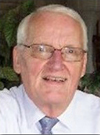 Professor Sven Erik Jørgensen, Dr. Eng, Dr. Scient. is the first recipient of the Prigogine Medal. He was a leading worldwide authority in ecological systems until his departure in 2016.
Professor Sven Erik Jørgensen, Dr. Eng, Dr. Scient. is the first recipient of the Prigogine Medal. He was a leading worldwide authority in ecological systems until his departure in 2016.
Scientific Career
1965 - 2016t: Employed at Royal Danish School of Pharmacy. Professor (full) in
Environmental Chemistry
1958 - 1960: Chem. Eng. at F.L. Smith A/S
1960 - 1965: Ass. Professor at DIA, K +independent consultants for the
chemical industry
1978 - Present: External associate professor in Env. Technology and Ecotechnology at The Danish Agricultural University
1974 - Present: Editor in chief of Ecological Modelling1991: Distinguished Visiting Professorship at Ohio State University
1985 - Present: Member of ILEC’s scientific committee (International Lake Environmental Committee). Since 1988 bureau member.
Since 1995 President (chairman)
1978 - 1996: Secretary general of ISEM
2005 Award
-
Prigogine Medal 2005: Enzo Tiezzi, Italy
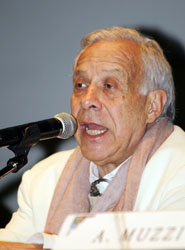 Prof Enzo Tiezzi of the University of Siena, is an internationally renowned scientist for his achievements in the field of ecological systems.
Prof Enzo Tiezzi of the University of Siena, is an internationally renowned scientist for his achievements in the field of ecological systems.
He is the author of more than 500 scientific papers, mostly published in prestigious international journals. His collaboration includes those with Ilya Prigogine, Howard Odum, Danilo Dolci, Edgar Morin, Herman Daly and Sven Jorgensen. His outstanding scientific career has been matched by a commitment to environmental and social issues.
Enzo has written more than 20 books, many of which have been translated and published in languages other than Italian. These books range from those dealing with scientific topics to those on humanities and poetry.
Enzo was awarded the Economic Progress Association Prize of Milano in 1997 and the Eminent Scientist Medal of the Wessex Institute of Technology in 2003. He received the Gold Medal of the Italian Chemistry Society for his environmental work in 2002 and that of the President of the Council of Ministers in 2003.
2006 Award
-
Prigogine Medal 2006: Bernard Patten, USA
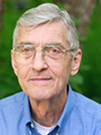 Bernard C. Patten is Regents Professor of Ecology at the University of Georgia, USA. He is a systems ecologist and ecological modeller, interested in the application of mathematical system theory to ecosystems.
Bernard C. Patten is Regents Professor of Ecology at the University of Georgia, USA. He is a systems ecologist and ecological modeller, interested in the application of mathematical system theory to ecosystems.
The award of the 2006 Prigogine Medal took place in the historical Town Hall of Tallinn and was chaired by the Rector of the University of Tartu who called the special convocation. Following the entrance of the academic procession, the Rector welcomed the attendees and called on Professor Carlos A. Brebbia to introduce Professor Patten. Carlos started by explaining that the Prigogine Medal was established in 2004 by the University of Siena and the Wessex Institute of Technology to honour the memory of Professor Ilya Prigogine.
Professor Prigogine was Honorary Chairman of the Sustainable City Conference and was to be Honorary Editor of the International Journal of Ecodynamics. Carlos pointed out that the occasion this time was highlighted by the presence of the two senior researchers who were awarded the Medal in previous years. They were Professor Sven Jørgensen of the Pharmaceutical University of Denmark (2004) and Professor Enzo Tiezzi of the University of
Siena (2005).
Carlos then proceeded to introduce Professor Patten. Professor Patten making his address International Journal of Ecodynamics. Vol. 1, No. 3 (2006)
218 ‘Bernard C. Patten is Regents’ Professor of Ecology at the University of Georgia, USA. He is a systems ecologist and ecological modeler, interested in the application of mathematical system theory to ecosystems. He has formulated a system theory of environment, called environ theory and analysis, that pioneers the use of network mathematics to represent and analyze ecosystem networks such as food webs and biogeochemical cycles.
His research publications include almost 180 papers on a variety of ecological topics spanning marine, freshwater and wetland ecosystems. ‘During 1975–86, Dr. Patten was Principal Investigator of an NSF sponsored ecosystem study of
Okefenokee Swamp, Georgia. From 1978–88, he served as a member of EPA’s Science Advisory Board. He chaired SCOPE/ICSU’s Scientific Advisory Committee on Wetlands, which produced a two-volume review of the world’s wetlands. He served as president of the International Society for Ecological Modelling – North America from 1982–90.
He is founder and president of Ecology Simulations, Inc., which has conducted contracts for the United Nations Development Program, International Atomic Energy Agency, US Soil Conservation Service, and US National Oceanic and Atmospheric Administration.
‘Dr. Patten has lectured and given short courses in systems ecology nationally and internationally. He has been a distinguished visiting professor, and served on the editorial boards of several respected scientific journals. His edited works include the four-volume book series Systems Analysis and Simulation in Ecology, two volumes on Wetlands and Shallow Continental Water Bodies, and Complex Ecology: The Part–Whole Relation in Ecosystems.
2007 Award
-
Prigogine Medal 2007: Robert Ulanowicz, USA
 Robert Ulanowicz’s impact in science is remarkable. It is not just a matter of scientific productivity, illustrated by more than 150 scientific papers in international journals and several books, as well as by his role as a member of the editorial board of more than half a dozen international journals.
Robert Ulanowicz’s impact in science is remarkable. It is not just a matter of scientific productivity, illustrated by more than 150 scientific papers in international journals and several books, as well as by his role as a member of the editorial board of more than half a dozen international journals.
The next speaker, Professor Joao Carlos Marques, described the career of his friend and colleague, Professor Robert Ulanowicz:
I have been asked to present Robert Ulanowicz, who will receive the 2007 Prigogine Award.
I accepted this mission with true pleasure since
(a) I admire Bob Ulanowicz’s work, which had a real impact in science; and
(b) I consider myself his friend for almost ten years.
What can be said in just a few minutes about Robert Ulanowicz as a man and as a scientist?
Outstanding – this word would summarize everything.
I knew Bob in the first place as just a name. In fact, the ink of my PhD thesis was still fresh, some eighteen years ago, and at that time Robert Ulanowicz was a ringing name for all those interested in Ecosystem Theory. I only had the opportunity of knowing him years later, when he kindly accepted to receive at Maryland one of my undergraduate students, who spent some months working with him at the Chesapeake Biological Laboratory. Later on, Bob also accepted to co-supervise her PhD thesis and visited us in Coimbra. Since then our encounters and scientific collaboration have become regular.
At the same time, walking along the beach in Møn, when we stayed in Denmark, or in the open fields around Salzau, in Germany, swimming in the Baltic, playing pelota, or tasting a good Paccina wine, in Italy, our friendship grew. During pleasant talks, many scientific questions that were less clear to me suddenly became obvious. I regret not having the opportunity of flying with Bob. Indeed, Bob also flies in the strict sense. Among his many skills, he used to ensure with his small airplane many aerial connections to and from the Chesapeake Biological Laboratory.
Bob is indeed a marvellous man and a distinct scientist. Professor at the University of Maryland, at the Chesapeake Biological Laboratory, Bob is a chemical engineer that walked through Ecosystems Theory exhibiting his superior skills in the domain of Complex Ecology. His professional contributions were outstanding with regard to Network Analysis, Information Theory in Ecology, Thermodynamics in Ecology, and Causality in Evolving Systems.
Another area of Bob’s professional expertise is the dialogue between science and religion in which, although I do not always agree with his view points, I admire his wide open intellect. Robert Ulanowicz’s impact in science is remarkable. It is not just a matter of scientific productivity, illustrated by more than 150 scientific papers in international journals and several books, as well as by his role as a member of the editorial board of more than half a dozen international journals. In my modest opinion, his impact is most significant in changing younger people’s way of thinking about Ecology by introducing systems perspective.
If you move around the world, you will encounter many more young scientists that look upon ecological problems from a new perspective, the systems perspective, and Robert Ulanowicz, through theoretical advances and tools development, is a key part of this process.
2008 Award
-
Prigogine Medal 2008: Ioannis Antoniou, Greece
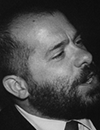 Ioannis Antoniou graduated from the Physics Department of the University of Athens. After graduation he worked in the Greek Ministry of the Environment on atmospheric pollution measurements and statistical analysis and went to Brussels for his PhD research, where Ilya Prigogine was one of his PhD advisors.
Ioannis Antoniou graduated from the Physics Department of the University of Athens. After graduation he worked in the Greek Ministry of the Environment on atmospheric pollution measurements and statistical analysis and went to Brussels for his PhD research, where Ilya Prigogine was one of his PhD advisors.
Ioannis Antoniou is Professor of Analysis and Statistics and Head of the School of Mathematics at the Aristotle University of Thessalonica.
He graduated from the Physics Department of the University of Athens. After Graduation he worked in the Greek Ministry of the Environment on atmospheric pollution measurements and statistical analysis and went to Brussels for his PhD research, where Ilya Prigogine was one of his PhD advisors. His Doctorate Thesis on Relativistic Chaos and Probabilistic Analysis of Complex Systems was the beginning of a fruitful collaboration and friendship with Ilya Prigogine. This work led to a new infinite dimensional algebra which extended the conventional Poincaré algebra of relativity to the explicit construction of a non-unitary transformation relating the non-wave equation with the telegraphist equation. Recently it was shown that this algebra provides a nice counter-example in the theory of non commutative algebras and that our extension of how the Time Operator can be applied to the diffusion equation and even to more general stochastic processes. The age eigenstates provided a new representation of the solution of the diffusion equation where the key issue of evolutionary processes admitting Internal Time is Innovation. Complex systems are qualified as the ones producing new information and innovation.
The relations of the Time Operator with what was known as subdynamics in the 1980’s was the second task that Ilya Prigogine suggested to Ioannis Antoniou after his PhD. Following a remark by J. Jauch that subdynamic expressions are meaningless in the Hilbert Space formulation, it was found that they acquire meaning in suitable extensions of the evolution operators beyond the Hilbert Space framework, to suitable locally convex spaces known also as Rigged Hilbert Spaces. In this framework resonances and decaying states appear as generalized eigenvalues and eigenfunctions of the evolution operators. In fact what underlies subdynamics is spectral theory of operators beyond the Hilbert Space.
These extensions gave no new information for stable and/or integrable systems, but for unstable and/or non-integrable systems they have proved to be intrinsically probabilistic and irreversible. This means that the statistical evolution cannot be reduced to trajectories or wave functions and that the statistical evolution is not a group, but splits naturally into two distinct semigroups. The future semigroup should be compatible with our observations, i.e. should correspond to entropy increase. In this framework irreversibility and probability prove to be intrinsic properties of complex systems and the relation with the Time Operator becomes clear. The age eigenstates are simply related to the resonance states by a generalized Fourier transform. This is just a generalization of the well-known position and momentum representations in quantum mechanics. Examples were found, however, where one can construct the Time Operator of the age eigenstates where the extended spectral decomposition does not exist for analytic functions. This situation, like the position representation, is not equivalent to the momentum representation. All this work provided a new mathematical formulation from the intuitive ideas of Ilya Prigogine which can be summarized with the three keywords he liked to use during his seminars: Irreversibility, Instability, Probability.
The discussion of Irreversibility demands an extension of our mathematical knowledge. These extensions gave rise to a new kind of fuzzy logic of classical and quantum complex systems and provided, moreover, new statistical tools for the analysis and simulation of complex systems. New results have been obtained in several applications: the development of probabilistic control strategies for complex systems, the development of probabilistic filters for the reconstruction of images obtained from Optical Coherence Tomography, remote sensing, 3-D data, and analysis of rare events originating from earthquakes or the stock market.
Prof. I Antoniou (3rd from left) “Ilya Prigogine’s work on car traffic flow developed in the 1960’s with Hermann is now considered to be the most successful traffic theory. The reason for the success of this theory is the same as with the success of kinetic theory. A probabilistic assumption on individual car traffic provides an effective level of description between the one particle level and the macroscopic fluid level. Further discussions with Ilya Prigogine helped Professor Antoniou to extend this idea to the study of flow of information packages on the internet. The development of probabilistic algorithms for complex systems is an inspiring and fruitful field of research which is expected to give interesting results in the near future.
Professor Antoniou’s work was carried out at the International Solvay Institute of Physics and Chemistry from 1982 until the passing away of Ilya Prigogine in May 2003. Ioannis Antoniou was appointed Deputy Director of the Solvay Institutes in 1994 where he stayed until 2004 when he returned to Greece. Inspired by the vision of Ilya Prigogine, Professor Antoniou is now involved in the statistical analysis of complex networks related to Biomedical Problems and the Internet, as well as in mathematical problems of Complexity.
The award ceremony took place during the Sustainable City 2008 conference.
2009 Award
-
Prigogine Medal 2009: Emilio del Giudice, Italy
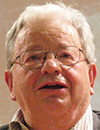
Professor Del Giudice’s research interests are focused on Quantum Field Theory with reference to the investigation of collective processes and living organisms, as well as the structure of liquid water.
The 2009 Prigogine Medal was awarded to Professor Emilio Del Giudice, currently member of the International Institute of Biophysics at Neuss in Germany. Professor Del Giudice previously worked at the National Institute of Nuclear Physics in Milano as well as the University of Naples, MIT, CERN and the Niels Böhr Institute.
Professor Del Giudice’s research interests are focused on Quantum Field Theory with reference to the investigation of collective processes and living organisms, as well as the structure of liquid water. Since the 1970s, Professor Del Giudice has been working on “the study of the emergence of the collective properties of matter and particularly of the living state”. The work of Professor Del Giudice is characterised by its innovative approach and a fresh look at scientific problems beyond their description in terms of mechanistic paradigms. In his own words “these concepts often come up against the inability of minds trained by absolute specialisation to detect the ‘unexpected connections’ between apparently unrelated facts which Poincare describes as the basis of scientific progress.
The award ceremony took place during the ECOSUD 2009 conference.
2010 Award
-
Prigogine Medal 2010: Felix Müller, Germany
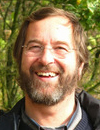 Felix Müller studied biology, geography and chemistry at the Universities of Kiel and Regensburg, before completing his Doctoral thesis at the University of Kiel on the topic of the impact of selected environmental chemicals in the soil.
Felix Müller studied biology, geography and chemistry at the Universities of Kiel and Regensburg, before completing his Doctoral thesis at the University of Kiel on the topic of the impact of selected environmental chemicals in the soil.
The recipient of the 2010 Award was Professor Felix Müller of the University of Kiel, Germany, where he is Coordinator of the Ecology Centre.
Felix is internationally renowned for his work on ecosystems theory, ecological modelling and landscape sciences.
The award ceremony took place during the Sustainable City 2010 conference.
2011 Award
-
Prigogine Medal 2011: Larissa Brizhik, Ukraine
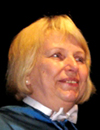 Larissa studied physics at Kiev State University before completing her PhD at the Bogolyubov Institute. Her current research interests included electro-photon interaction, soliton mechanism for energy storage and the influence of electromagnetic radiation on biological systems amongst others.
Larissa studied physics at Kiev State University before completing her PhD at the Bogolyubov Institute. Her current research interests included electro-photon interaction, soliton mechanism for energy storage and the influence of electromagnetic radiation on biological systems amongst others.
Professor Carlos Brebbia, Director of Wessex Institute of Technology introduced the awardee. The 2011 medal was awarded to Professor Larissa Brizhik of Bogolyubov Institute for Theoretical Physics in the Ukraine, who is also a member of the International Institute of Biophysics in Neuss, Germany.
Larissa studied physics at Kiev State University before completing her PhD at the Bogolyubov Institute. Her current research interests included electro-photon interaction, soliton mechanism for energy storage and the influence of electromagnetic radiation on biological systems amongst others.
Larissa
Her current research interests included electro-photon interaction, soliton mechanism for energy storage and the influence of electromagnetic radiation on biological systems amongst others.
Larissa has published a substantial number of papers in leading scientific journals and has participated in many conferences around the world.
The award ceremony took place during the ECOSUD 2011 conference.
2012 Award
-
Prigogine Medal 2012: Gerald Pollack, USA
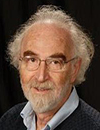 Gerald received his PhD in biomedical engineering from the University of Pennsylvania and since then has carried out outstanding research in a wide variety of fields, ranging from biological motion and cell biology to the interaction of biological surfaces with aqueous solutions.
Gerald received his PhD in biomedical engineering from the University of Pennsylvania and since then has carried out outstanding research in a wide variety of fields, ranging from biological motion and cell biology to the interaction of biological surfaces with aqueous solutions.
Carlos briefly described the career of Gerald Pollack, the recipient of the 2012 Medal, Professor of Bioengineering at the University of Washington, USA.
Gerald received his PhD in biomedical engineering from the University of Pennsylvania and since then has carried out outstanding research in a wide variety of fields, ranging from biological motion and cell biology to the interaction of biological surfaces with aqueous solutions. He has published numerous papers in leading scientific journals and is author of several books, including one on the underlying principle of biological motion and another on cells and gels as the engines of life.
He has received many awards and is a member of prestigious national and international organisations. Gerald is founding Fellow of the American Institute of Medical and Biological Engineering and a Fellow of both the American Heart Association and the Biomedical Engineering Society.
Carlos then asked Professor Nadia Marchettini, of the University of Siena and widow of Enzo Tiezzi to present the medal.
Nadia referred to the saying ‘Scientists do not read Shakespeare and humanists have no sense for the beauty of mathematics’. That is how Prigogine introduced the dichotomy between the two cultures, scientific and humanist.
When Enzo Tiezzi met Carlos A Brebbia – Nadia said – to discuss the idea of launching a special award for scientist-humanistic in memory of his mentor Ilya Prigogine, Enzo clearly expressed the opinion to rejoin those two cultures.
The Prigogine medal was conceived to reward interdisciplinary research and overcome the problem of the fragmentation of knowledge imposed by artificial mesh boundaries’
In this regard it is pertinent to quote Herman Daly, father of Ecological Economics, who said,
‘Real problems do not observe academic boundaries. We certainly believe that thinking should be ‘disciplined’ in the sense of observing logic and facts, but not ‘disciplinary’ in the sense of limiting itself to traditional methodologies and tools that have become enshrined in the academic departments’
Nadia ended her remarks with a few words that Enzo would have to say on occasions and were found in a note amongst his many papers. They are of particular interest in the time of crisis we are currently living ie:
‘Democracy is always the fruit of co-evolution of the natural environment and human culture, and therefore varies from place to place.
‘Democracy can only exist if the natural and cultural diversity of a region is respected and considered, and with it the sacredness of places.
‘Democracy is real democracy if it allows science and art to express themselves without the constraints of utility, ideology, dogma, economic interest or aims. Archimedes used to say that he was not concerned with useful things, only with the free and beautiful.
The award ceremony took place during the Sustainable City 2012 conference.
2013 Award
-
Prigogine Medal 2013: Vladimir Voeikov, Russia
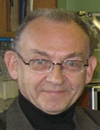 Vladimir is renowned in the field of physical and chemical properties of water and aqueous systems providing for the biological role of water in bioenergetics, in particular, in aerobic respiration, functions of reactive oxygen species in regulation of biological functions and in bioenergetics.
Vladimir is renowned in the field of physical and chemical properties of water and aqueous systems providing for the biological role of water in bioenergetics, in particular, in aerobic respiration, functions of reactive oxygen species in regulation of biological functions and in bioenergetics.
The recipient of the 2013 Award was Prof Vladimir Voeikov, Professor of Bio-organic Chemistry at Lomonosov Moscow State University, Russia.
Vladimir received his degree at Moscow State University and a PhD in Biophysics at the same institution, completing after that a further doctorate on Biological Sciences.
Since then he has been carrying out outstanding research at the Moscow Academy of Science, Duke University and Moscow State University. He is renowned in the field of physical and chemical properties of water and aqueous systems providing for the biological role of water in bioenergetics, in particular, in aerobic respiration, functions of reactive oxygen species in regulation of biological functions and in bioenergetics.
Vladimir is the author or co-author of more than 250 publications including 100 papers in scientific journals, as well as five books and monographs.
He is a member of the renowned Institute of Biophysics in Neuss, Germany and of the all-Russian Biochemical Society as well as an Editor of the Journal on Water, a multi-disciplinary research journal.
The award ceremony took place during the ECOSUD 2013 conference.
2014 Award
-
Prigogine Medal 2014: Mae-wan Ho, UK
Mae-Wan Ho, Director and co-founder of the Institute of Science in Society (ISIS), well recognized for her efforts to reclaim science for the public good and to promote social responsibility and ecological sustainability.
The 2014 Medal has been awarded to Prof Mae-Wan Ho, founding Director of The Institute of Science in Society.
Prof Brebbia explained that the Dr Ho’s work provides information about biotechnological issues as well as sustainability, climate change and, in particular, the nature of water.
Prof Ho received a PhD in Biochemistry from Hong Kong University. She was a Post-Doctoral Fellow in Biochemical Genetics at the University of California, San Diego; Senior Research Fellow at Queen Elizabeth College; Lecturer in Genetics and Reader in Biology at the Open University, UK.
Prof Ho is the author of several books and Editor of Science in Society, produced by her Institute. She is a prolific author. Two of her books are prominent in explaining the role of biological water in organising living processes. She has been extremely productive with nearly 200 scientific papers, over 600 popular articles and several more books.
Moreover, she has written a book showing the lack of sustainability of genetically modified organisms. She has also contributed significantly to the thermodynamics of complex systems, and has discussed extensively the Prigogine ideas. A recent article of hers discusses what should be a reliable thermodynamics of living organisms, developing a Prigogine’s approach.
The award ceremony took place during the Sustainable City 2014 conference.
2015 Award
-
Prigogine Medal 2015: Bai-Lian Larry Li, USA
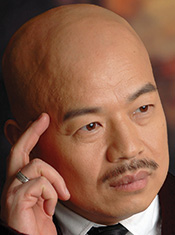
B. Larry Li is Professor of Ecology and Director of three research Centres at the University of California, Riverside, ie the International Centre for Ecology and Sustainability, the International Centre for Arid Land Ecology, and the US
Department of Agriculture – China Joint Research Centre for AgroEcology and Sustainability. Professor Li has a broad inter-disciplinary background and experience in mathematical, statistical and computational modelling applications in ecological studies.
Professor Li is a Fellow of the Institute for Human Ecology, USA; Chair Professor of the Chinese Academy of Science, Honorary Professor of the Russian Academy of Sciences and Fellow of the
American Association for the Advancement of Science among other important recognitions. He currently presides over the Eco-Summit Foundation and is a member of NFS Scientific Panels. He has been the founder and editor of the prestigious International Journal on Ecological Complexity and the Journal of Arid Land. He organised many symposia and courses with other organisations, including the Max-Planck and Santa Fe Institutes.
Prof Li has worked on a wide variety of ecological projects including recent involvement in energetic and thermodynamic ecological systems and restoration ecological patters formations and long-term ecological research in the USA and internationally. He has published more than 200 refereed Journal articles, and numerous conference papers in addition to 30 book chapters and 8 books or edited special issues.
The award ceremony took place during the ECOSUD 2015 conference.
2016 Award
-
Prigogine Medal 2016: Brian Fath, USA
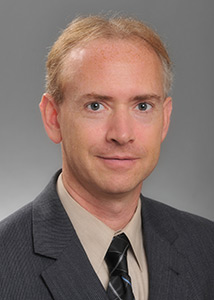 Brian's interests range from network analysis to ecosystem theory to urban metabolism to systems thinking and environmental philosophy. Dr. Fath has taught courses on ecological networks and modelling in many different locations around the world.
Brian's interests range from network analysis to ecosystem theory to urban metabolism to systems thinking and environmental philosophy. Dr. Fath has taught courses on ecological networks and modelling in many different locations around the world.
He is a Professor in the Department of Biological Sciences at Towson University (Maryland, USA) and Research Scholar within the Advanced Systems Analysis Program at the International Institute for Applied Systems Analysis (Laxenburg, Austria). His research is in the area of systems ecology and network analysis applied to the sustainability and resilience of socio-ecological systems. His interests range from network analysis to ecosystem theory to urban metabolism to systems thinking and environmental philosophy. Dr. Fath has taught courses on ecological networks and modeling in many different locations around the world. He holds visiting faculty appointments at the School of Environment, Beijing Normal University and at the State Key Laboratory of Urban and Regional Ecology, Chinese Academy of Sciences both in Beijing, China. He was also Fulbright Distinguished Chair at Parthenope University of Naples, Italy.
He has published numerous research papers, reports, and book chapters. He co-authored three books: He is Editor-in-Chief for the journal Ecological Modelling; President of the North American Chapter of International Society for Ecological Modelling and, among other appointments, he is a member and past Chair of Baltimore County Commission in Environmental Quality.
The award ceremony took place during the Sustainable City 2016 conference.
2017 Award
-
Prigogine Medal 2017: João Carlos Marques, Portugal
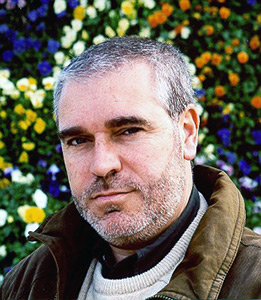 The recipient of the 2017 Award was Prof João Carlos Marques from the University of Coimbra, Portugal who studied at the University of Lisbon, where he received a graduate degree in biology in 1980.
The recipient of the 2017 Award was Prof João Carlos Marques from the University of Coimbra, Portugal who studied at the University of Lisbon, where he received a graduate degree in biology in 1980.
From early on, he was intrigued by scientific research, particularly in the field of marine biology and ecology, and thus pursued his academic studies, earning a PhD in ecology from the University of Coimbra in 1989, where subsequently he became Assistant Professor. Pursuing his academic career, he came to be Full Professor in 2004.
Marine and estuarine ecology has since then been his core area of research, and he soon developed an interest in aquatic ecosystems in general, as well as on their interface with terrestrial ecosystems, always focusing on the study of ecological processes and their characterisation, quantification and modelling. Data and concepts integration gradually led to a broader view of sustainability problems of both natural and human built systems, namely focusing on the ecosystems services approach and on the development and application of suitable ecological indicators of ecosystems health and performance.
Additionally, he played a key role in creating new research infrastructures at Portuguese national level, namely acting as general coordinator of a “Pilot network for integrated long-term observation and research on Coastal Systems and Hydrographical Basins”.
Such intensive scientific activity allowed him to develop a large network of international cooperation with top scientists and research institutions, which is expressed in his scientific productivity.
The award ceremony took place during the Sustainable City 2017 conference.
2018 Award
-
Prigogine Medal 2018: Stuart Kauffman, USA
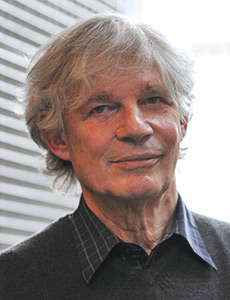 Professor Stuart Kauffman is an American medical doctor, theoretical biologist, and complex systems researcher who studies the origin of life on Earth. He was a professor at the Universities of Chicago, Pennsylvania and Calgary. He is currently Emeritus Professor of Biochemistry at the University of Pennsylvania and affiliate faculty at the Institute for Systems Biology. He has a number of awards including a MacArthur Fellowship and a Wiener Medal.
Professor Stuart Kauffman is an American medical doctor, theoretical biologist, and complex systems researcher who studies the origin of life on Earth. He was a professor at the Universities of Chicago, Pennsylvania and Calgary. He is currently Emeritus Professor of Biochemistry at the University of Pennsylvania and affiliate faculty at the Institute for Systems Biology. He has a number of awards including a MacArthur Fellowship and a Wiener Medal.
He is best known for arguing that the complexity of biological systems and organisms might result as much from self-organisation and far-from-equilibrium dynamics as from Darwinian natural selection as discussed in his book Origins of Order (1993). In 1967 and 1969 Kauffman used random boolean networks to investigate generic selforganising properties of gene regulatory networks. Using these models, he proposed that cell types are dynamical attractors in gene regulatory networks and that cell differentiation can be understood as transitions between attractors. Recent evidence suggests that cell types in humans and other organisms are attractors.
In 1971 he suggested that a zygote may not be able to access all the cell type attractors in its gene regulatory network during development and that some of the developmentally inaccessible cell types might be cancer cell types. This suggested the possibility of “cancer differentiation therapy”. He also proposed the self-organised emergence of collectively autocatalytic sets of polymers, specifically peptides, for the origin of molecular reproduction, which have found experimental support.
The award ceremony took place during the Sustainable Development and Planning 2018 conference.
2019 Award
-
Prigogine Medal 2019: Luc Montagnier, Switzerland
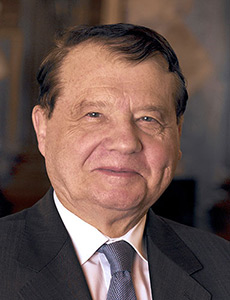 Professor Luc Montagnier graduated in Medicine as well as in Biological Sciences at the University of Paris. At the age of 23, he became an Assistant to a Professor there.
Professor Luc Montagnier graduated in Medicine as well as in Biological Sciences at the University of Paris. At the age of 23, he became an Assistant to a Professor there.
After a fruitful post-doctoral stay at two British laboratories, he spent most of his career at two renowned French institutions, namely the Institut Curie and the Institut Pasteur in Paris. At the Institut Pasteur, where he spent almost 30 years, he founded the Viral Oncology Research Unit within the Department of Virology. His focus was cancer viruses, mainly the oncogenic retroviruses, and the biochemical aspects of interferon and malignant transformation, including membrane changes in relation to the growth in soft agar, for which he contributed to the revelation of a new property of cultured malignant cells.
In 1983, Montagnier led the team which first isolated the Human Immunodeficiency Virus (HIV1) and brought the first evidence that this virus was the causative agent of AIDS. In 1985 he isolated the second AIDS virus (HIV2) from West African patients.
Montagnier’s Laboratory was also the first to show that a large percentage of the white blood cells in HIV infected patients were prone to dying by apoptosis, a process of programmed cell death and to attribute its origin to the oxidative stress occurring in the patients, possibly associated with co-infections.
His current work is in the diagnosis and treatment of microbial and viral factors associated with cancers, neurodegenerative and articular diseases, using innovative technologies. As a strong advocate of preventive medicine, he is especially concerned with prolonging the active life of ageing people.
Beyond Montagnier’s scientific interest is his deep involvement in helping developing countries to acquire knowledge of and access to modern and preventive medicine. As President of the World Foundation for Aids Research and Prevention, he has co-founded two Centres for the prevention, treatment, research and diagnosis of AIDS patients in Ivory Coast and Cameroon.
Ten years ago, Professor Montagnier co-founded CHRONIMED, an international group of physicians treating chronic diseases including, but not limited to, Autism spectrum diseases, Alzheimers, Lyme, Multiple Scleroses and Cancer.
Various treatment modalities are used for these multi-factorial conditions. Most of these treatments were developed upon the research of Montagnier and his Chronimed associates.
At its premises in Geneva, Switzerland, Fondation Luc Montagnier, together with its associated Chronimed clinicians, carries out cutting edge research and treatments, bringing in international investigators in various fields.
Luc Montagnier has been awarded many Prizes, including Prizes Rosen (1971), Gallien (1985), Korber (1986), Jeantet (1986), the Lasker Prize in Medicine (1986), the Gairdner Prize (1987), Santé Prize (1987), Japan Prize (1988), King Faisal Prize (1993), Amsterdam Foundation Prize (1994), Warren Alpert Prize (1998), Prince of Asturias Award (2000) the induction to the National Invention Hall of Fame (2004). He is Commandeur de l'Ordre National du Mérite (1986) and Grand Officier of the Legion of Honour (2009)
In 2008, he was awarded the Nobel Prize for Physiology and Medicine, for his discovery of HIV, together with Françoise Barre-Sinoussi.
He is the author or co-author of 350 scientific publications and of more than 150 patents.
The award ceremony took place during the Sustainable City 2019 conference.
2020 Award
-
Prigogine Medal 2020: Diederik Aerts, Belgium.
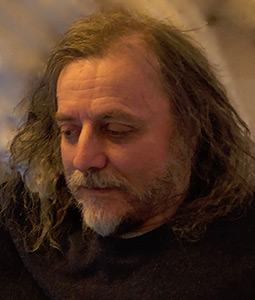 Professor Diederik Aerts graduated with an MSc in Mathematical Physics and holds a PhD in Theoretical Physics from Brussels Free University. For his doctoral research, he worked with Constantin Piron within the so-called ‘Geneva School on the Foundations of Physics’, on the ‘quantum axiomatic description of composite entities’, proving among other things the ‘impossibility of standard quantum theory to model systems of separated entities’.
Professor Diederik Aerts graduated with an MSc in Mathematical Physics and holds a PhD in Theoretical Physics from Brussels Free University. For his doctoral research, he worked with Constantin Piron within the so-called ‘Geneva School on the Foundations of Physics’, on the ‘quantum axiomatic description of composite entities’, proving among other things the ‘impossibility of standard quantum theory to model systems of separated entities’.
For his postdoc, Professor Aerts worked at the Belgian National Fund for Scientific Research, where he was also a tenured researcher, and he then became a professor at Brussels Free University (VUB). There, he was the director of the Center Leo Apostel of Interdisciplinary Studies, before becoming emeritus a year ago. He is Editor-in-Chief of the Springer Nature journal ‘Foundations of Science’ and a board member of the Worldviews group, founded by the late philosopher Leo Apostel. He is also president of the Centre for Quantum Social and Cognitive Science (IQSCS) at Leicester University (UK) and a Fellow of the College of the International Institute for Advanced Studies in Systems Research and Cybernetics (IIAS). He was the scientific and artistic coordinator of the ‘Einstein meets Magritte’ conference, at the VUB, where some of the world’s leading scientists and artists gathered to reflect on science, nature, human action and society. This was followed up by two international symposia co-organized with his collaborators and students, ‘Times of Entanglement’ at the World-Exhibition in Shanghai and ‘Worlds of Entanglement’ at the VUB.
Professor Aerts is considered to be one of the pioneers of the research domain called ‘Quantum Cognition’, where quantum structures are used to model aspects of human cognition and decision, a domain in which he is still actively engaged with his group of collaborators and PhD students. Starting from his reflection in the field of quantum cognition, Professor Aerts also formulated a new interpretation of quantum theory, called the ‘conceptuality interpretation’, where quantum entities are considered to be concepts (meaning entities) instead of objects. With his group, he is currently elaborating this challenging approach in all its possible facets and fields of inquiry, as it appears to be able to elucidate fundamental aspects of quantum theory, such as uncertainty, indistinguishability, entanglement and superposition, which have not yet found a satisfactory explanation in existing quantum interpretations.
The 2020 Prigogine Medal was awarded in an on-line ceremony organized as part of the Air and Water Pollution 2022 virtual conference. The event took place on 6th July 2022 at 2:00 PM. Professor Diederik Aerts delivered a Special Prigogine Lecture titled “A Quantum Quest: From Operational Quantum Axiomatics to Quantum Conceptuality, or How to Unveil Meaning in Reality.”
2021 Award
-
Prigogine Medal 2021: Simone Bastianoni, University of Siena, Italy.
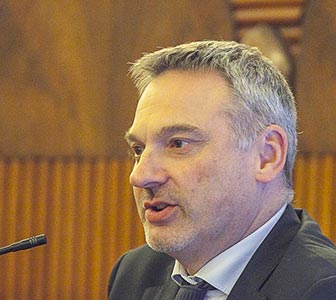 After completing classical high school studies, Simone Bastianoni received his master degree in Electronic Engineering at the University of Padova (1990) and then entered the PhD program in Chemical Sciences at the University of Perugia, Italy. During this period, he was visiting scholar at the University of Florida (in 1993) under the supervision of prof. H.T. Odum. He wrote a dissertation on the Development of Novel Thermodynamic Indicators for the Investigation of Ecological Systems under the supervision of Prof. Enzo Tiezzi. He obtained his PhD degree in 1995.
After completing classical high school studies, Simone Bastianoni received his master degree in Electronic Engineering at the University of Padova (1990) and then entered the PhD program in Chemical Sciences at the University of Perugia, Italy. During this period, he was visiting scholar at the University of Florida (in 1993) under the supervision of prof. H.T. Odum. He wrote a dissertation on the Development of Novel Thermodynamic Indicators for the Investigation of Ecological Systems under the supervision of Prof. Enzo Tiezzi. He obtained his PhD degree in 1995.
After a career at the University of Siena working in Prof. Tiezzi’s group (with a period as visiting scientist at the Royal Danish School of Pharmacy with S.E. Jørgensen, in 1999), Prof. Bastianoni has been Co-director of the Ecodynamics Group, together with Prof. Nadia Marchettini, since Prof. Tiezzi’s death in 2010. This transdisciplinary group includes chemists, economists, biologists, environmental scientists, architects and engineers (www.ecodynamicsgroup.unisi.it). He is currently full professor of Environmental Chemistry, Chair of the PhD School in Environmental, Geological and Polar Sciences and Provost for Sustainability at the University of Siena.
Prof. Bastianoni has 30 years of experience in investigating sustainability indicators, adopting a holistic view, common to thermodynamics and ecology, including the evaluation of eMergy, eXergy, Ecological Footprint, Life Cycle Assessment (LCA), and greenhouse gases balance. He has identified the relationship between emergy and exergy as a key indicator for understanding the degree of organization of ecosystems and then enlarged this understanding to an input-state-output view of both ecosystems and human ones with applications to sustainability. He has also developed, with other colleagues at the University of Siena. a method for a fast estimation of the greenhouse gases emissions attributed according to a consumer responsibility and a 3D view of the Ecological Footprint that discriminates flows and stocks.
Prof. Bastianoni is a past President of the Emergy Society, Member of the Standard Committee of the Global Footprint Network and Member of the Scientific Board of the International Society of Ecological Modelling. After directing the project that has led the province of Siena to be the first territory of the world to be certified for its greenhouse gases balance, he is now President of the Siena Alliance for Carbon Neutrality (www.carbonneutralsiena.it).
He has published more than 200 papers, with an H-index of 46 (Google Scholar). He is also co-author of several monographs, including:
- Jørgensen S.E., Fath B.D., Nielsen S.N., Pulselli F.M., Fiscus D.A., Bastianoni S., 2015. Flourishing within limits to growth - Following nature’s way, Routledge, Padstow, UK, 288 pp.
- Pulselli F.M., Bastianoni S., Marchettini N., Tiezzi E., 2008. The road to sustainability, WIT Press, Southampton, UK; 197 pp.
In 2004 he received the first Prigogine Junior Medal.
The 2021 Prigogine Medal was awarded in a ceremony organized University of Siena, Italy. The ceremony was also broadcasted on-line. The event was held on 7th July 2022 at 2:00 PM, during which Professor Simone Bastianoni delivered a special lecture titled “A Sustainability Viewpoint for a Post-Covid-19 Pandemic Society”.
2022 Award
-
Prigogine Medal 2022: Robert Gilmore, Drexel University, USA.
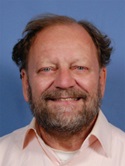
Prof. Gilmore was raised in Astoria, Queens. He received his undergraduate degrees in Mathematics and Physics from M.I.T. in 1962 and his Ph. D. from M.I.T.'s Physics Department in 1967. He has held professorships at M.I.T. in Cambridge, University of South Florida in Tampa, and Drexel University in Philadelphia.
He has had Visiting Professorships at Alabama A. & M. University in Huntsville, Johann Wolfgang von Goethe Universitat in Frankfurt, The Technion in Haifa, University of Lille I, and Université de Rouen both in France. His research interests are driven by exposure to data and have evolved from Solid State and Molecular Physics to Laser Physics to Catastrophe Theory to Nuclear Physics to the Theory of Chaos, with a forever background interest in the Geometric Formulation of Thermodynamics.
He has written six books on these subjects.
The 2022 Prigogine Medal was awarded in an on-line ceremony, organized as part of the FRIAR 2022 virtual conference. The event was held on 8th July 2022 at 2:00 PM. Prof. Robert Gilmore delivered a lecture titled “Thermodynamics and Ecodynamics.”
2023 Award
-
Prigogine Medal 2023: Søren Nors Nielsen, Aalborg University, Denmark.
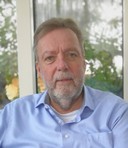
Søren Nors Nielsen was born and raised in Vejle, where from early childhood he explored the beautiful surroundings together with his father, a school teacher. This undoubtedly contributed to inspire an interest in biology – an interest and concern that is not easy to ignore. After high school he continued directly to the University of Copenhagen to study biology, graduating with a thesis on estuarine ecology. This included the development of a rough model attempting to simulate the water flows and mass balances in the study area.
Shortly after graduation he came into contact with Sven Erik Jørgensen, who offered him a post on a project modelling aquacultural activities. He continued to work in similar project posts for 17 years. In one of these, he was asked to implement the newly-developed exergy function, derived for ecosystems, and immediately understood its significance for other areas of ecology - and for biology in general. His PhD thesis dealt with the potential for implementing the exergy function as a pure goal function influencing ecosystem development
Teaching and learning have also formed a core of his activities, starting with freshmen’s tutorials as a student, followed by courses with Sven Erik Jørgensen on ”Systems Analysis for Biologists” - later supplemented with additional perspectives for students of pharmacology and environmental chemistry; these have been held almost 70 times in several countries. Other teaching activities include lectures in philosophy of science, physical chemistry, and – as the latest development – the post of lecturer in sustainability, biotechnology and technoanthropological at Aalborg University
The 2024 award ceremony was hosted in Seville on 23rd September 2024, during the Sustainable Development and Planning 2024 conference. Professor Nielsen contributed to the event with a special lecture: "Formulating a Sustainable Management by Learning from Nature".
2024 Award
-
Prigogine Medal 2024: Filip Meysman,University of Antwerp, Belgium.

Prof. Filip Meysman was raised near Brussels in Belgium, and was originally trained as a Chemical Engineer (1993, KULeuven, Belgium), focusing on waste water treatment technology. Struck by the miraculous nature and complexity of the microbiological processes occurring in wastewater treatment, he took a second MSc degree in Biology (1996, University of Ghent, Belgium), thus attesting to his early cross-disciplinary interest in the natural sciences. During his PhD (2001, University of Ghent, Belgium), he focused on the model simulation of ecosystems, describing the seafloor ecosystem as a biogeochemical reactor using thermodynamic and kinetic approaches.
In his research, Filip Meysman has worked on a variety of cross-boundary problems at the interface between biology, physics, (bio)chemistry and geology, including carbon cycling, ocean acidification, and more recently, marine carbon dioxide removal. As such, he also developed a research interest in theoretical ecology and a far-from-equilibrium thermodynamic description of ecosystems, including alternative stable states and non-linear dynamics (as also explored by Ilya Prigogine). Over his career, he has authored more than 150 research articles and received several awards that recognize scientific excellence.
Currently, Filip Meysman heads the GeoBiology research group at the University of Antwerp (Belgium), where he also coordinates the Centre of Excellence on Microbial Systems Technology. His most recent research embraces interdisciplinary approaches (biochemistry-biophysics) to investigate the intriguing and exciting phenomenon of microbial electricity (www.microbial-electricity.eu). A specific goal is to uncover the design principles of natural highly conductive protein materials in order to create novel biobased, organic conductors with extraordinary properties.
The award ceremony took place on 4th April 2025 at the University of Antwerp in Belgium, which is Professor Meysman’s home institution.
2025 Award
-
Prigogine Medal 2025: Ichiro Aoki (formerly) Shizuoka University, Japan

Professor Ichiro Aoki was born in 1935, in Echizen City, in the Fukui Prefecture, in Japan. He studied at Kyoto University, from which he graduated with a BS (Physics) in 1958, a MS (Physics) in 1960 and a DS (Biophysics) in 1963.
In the period 1963‐1965, he was employed as a post-doctoral fellow of the Yukawa Memorial Foundation, and as a part‐time lecturer at the Research Institute of Fundamental Physics of Kyoto University (Biophysics). In the period 1965‐1995, he taught physics as an Associate Professor of Osaka Medical College. During the period 1995-1999, he served as a Professor of Systems Science at Shizuoka University. He has also been a part-time Lecturer in Molecular Biology and Physics at various times at Kyoto University
He has carried out theoretical research in Physics, Biophysics and Astrophysics. His key ideas of research have been the Second Law of Thermodynamics (open, far from equilibrium, irreversible), macroscopic complex systems, non-reductionistic, systemic views through ‘macroscope’ (opposite to microscope, H.T. Odum). His inter-, trans- and multi-disciplinary research combined physics, physiology, ecology, geophysics and cosmology.
More specifically, he has worked on the entropy concept in biotic systems concluding that entropy (the key concept in the Second Law of Thermodynamics) itself cannot be measured nor calculated for living systems and quantitative arguments cannot be developed. However, entropy production has been estimated numerically and discussed for various complex systems from physiology and ecology, for the first time. The view should be shifted from entropy content itself to entropy production in considering biotic systems from the viewpoint of the Second Law of Thermodynamics.
Schrödinger's "negative entropy" was numerically clarified and the maximum entropy production principle (MEP) was clarified for real processes in nature for the first time.
He introduced the Max‐Min Entropy Production Principle (MMEP) which states that entropy production in life span of living systems from individual organisms to ecosystems shows a tri-phase character: early increase, transition, later decrease with time with fluctuations. Thus, verbal ambiguous arguments on entropy related to biotic systems have become exact science. Entropy production in the earth and the planets was numerically estimated for the first time. Metabolism of water, protein and energy in human body was numerically analysed by use of Input-Output Flow Analysis which has its origin in economics. Biological evolution on the earth and all biotic systems existing in the universe are governed by MMEP while evolution of the universe from the birth to the death is governed by MEP.
The second Law of Thermodynamics (Entropy principle) is the theory of everything in all in the universe, from the holological viewpoint (holological: a jargon by E. Hutchinson , Amer. Sci. 52, 334-341 (l 964)).
Professor Aoki has authored 42 papers published in international journals, 9 reviews in Japanese publications and made 18 presentations at international conferences.
The 2025 Prigogine Medal was presented to Professor Ichiro Aoki of Shizuoka University, Japan during the Energy and Sustainability 2025 conference held in Ancona, Italy in September. Following the award presentation, Professor Aoki delivered a special lecture entitled "Ecological Thoughts Based on Thermodynamics". The ceremony took place on 16th September 2025 at 11:30 AM at the Faculty of Economics, Università Politecnica delle Marche.
Abstract
"The simple history of "Ecological Thoughts" are described from the age of The Ancient Greek to the 20th century. The living systems from bacteria to ecosystems and the universe are explained by use of the concept and viewpoint of Thermodynamics established in the 19th century. This consideration is on the methodology of the "holological" thought by G. E. Hutchinson in the 20th century."

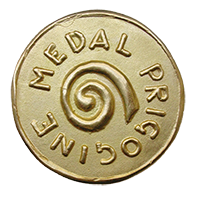
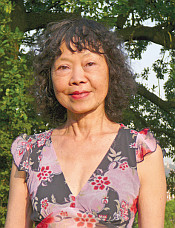
 Wessex Institute
Wessex Institute